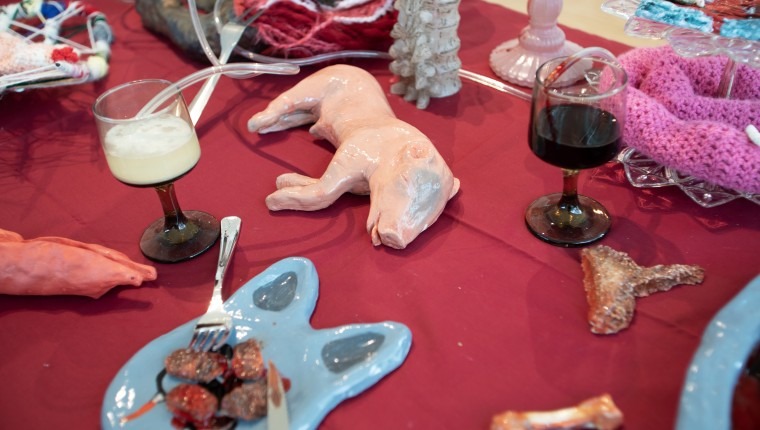. . .
Jahcinda Law’s exhibition titled Meat Your Maker, recently on view at Eckerd College’s Nielsen Center for Visual Arts Main Gallery, brought together family heirlooms, ceramic trompe-l’oeils and cyanotypes that represent what it’s like to be a woman.
Law used the analogy of meat for sculptural works made from quilts, crochet, ceramics and readymades to show how women are affected by misogyny. By employing artistic materials and forms traditionally affiliated with women, Law is commemorating those who came before her while employing their techniques to create new perspectives.
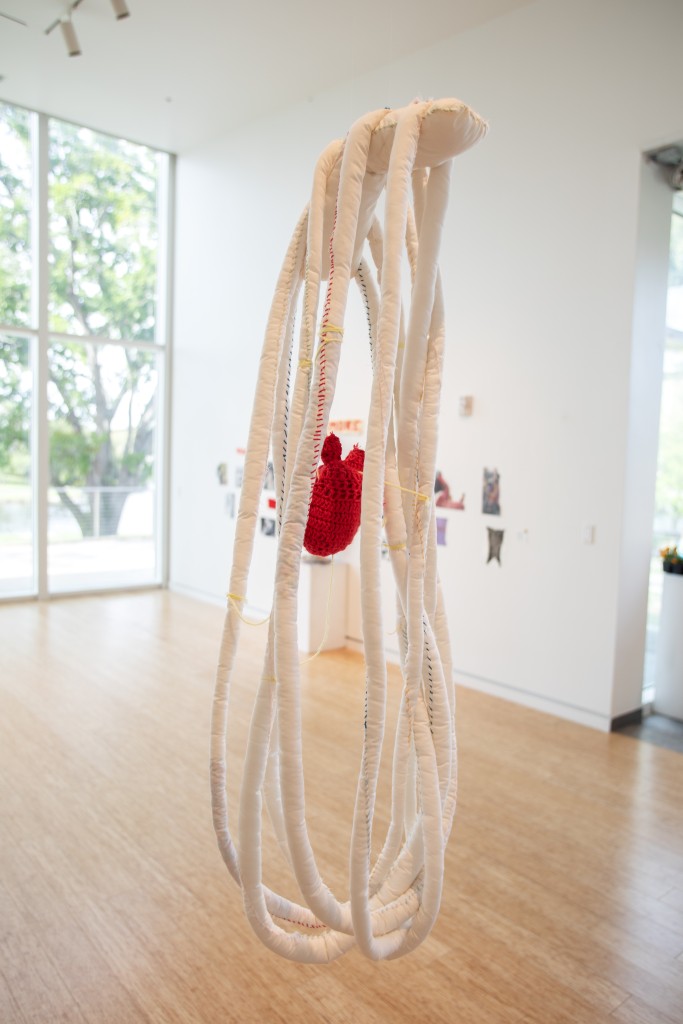
Because it’s arranged as clusters of objects whose collective meaning creates a single work, Meat Your Maker can be understood as an exhibition of assemblages.
Yet Law pushes the boundaries of what can be considered an assemblage by creating distance between objects and vacant spaces occupied by viewers – that results in a tension between what can be considered a sculpture and what can be considered an installation.
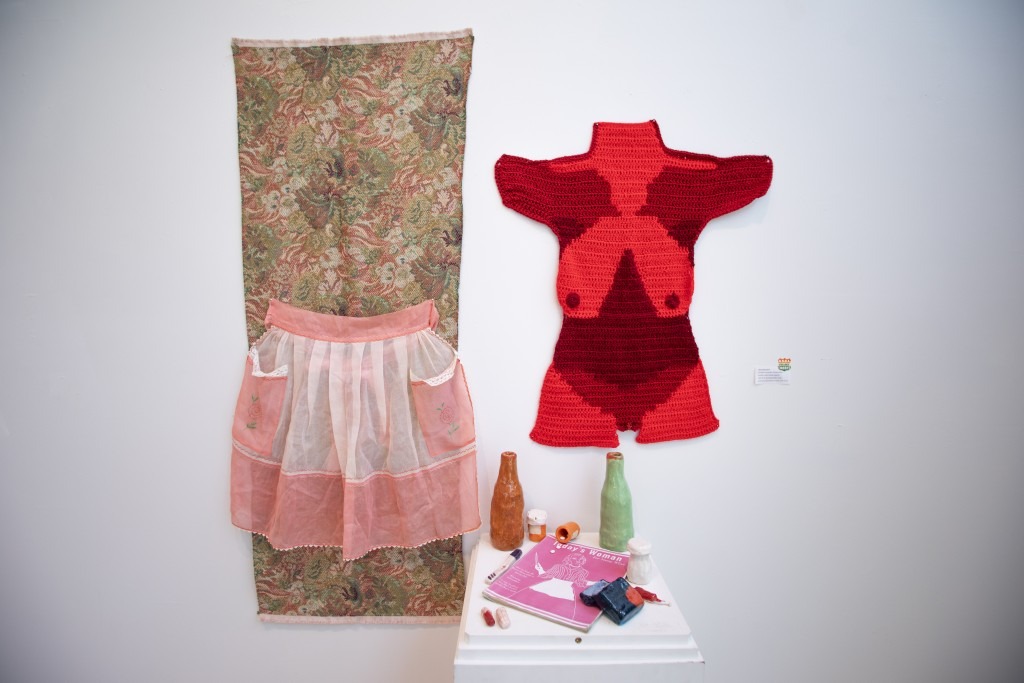
“I’m not entirely sure how to put my style into words,” says Law. “I kind of just have different skills under my belt that I experiment with. I really enjoy collage, and being able to put things together, and my approach to that is used throughout all my artwork. I see everything as a collage, and a way to layer and put things together to make one coherent piece.
“When I started with clay, I began to enjoy 3D forms, which I hadn’t been able to previously. This launched me into sculpture where I could make something that didn’t involve many restrictions.
“I then applied that experience to other media. Using my existing knowledge of crochet, I imitated the freeform style artists were doing to bring my crochet into a sculpture form.”
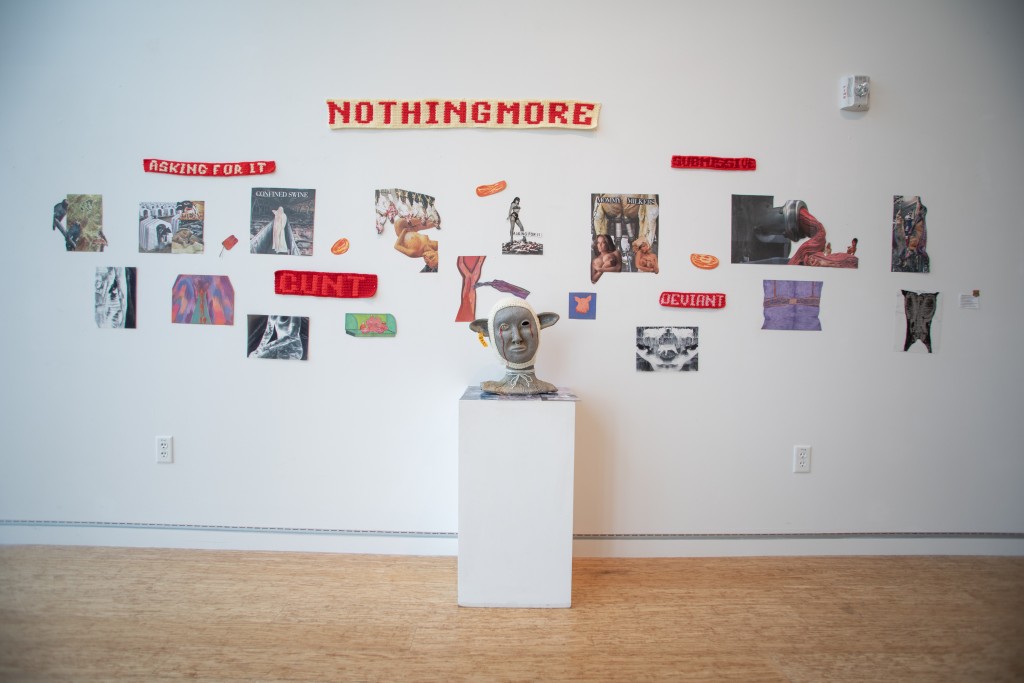
“Also, not to be too cheesy, but fate has definitely steered me into a certain direction. If I hadn’t accumulated the yarn, fabric or other materials from my great-grandmothers Arizona, Delfie and Anne, my grandmother Judy, and my sisters Ashley and Kaya, I wouldn’t have the color pallet I do or use the media I use. Due to financial constraints, I wouldn’t have been able to make what I did all from scratch or buy every material that I already had.
“Looking back at things, it feels like all the little things I’ve done have led me to this point so that I can bring all these things together the way I did. Obviously, I have a large role in all of it, but I think there are certain things that happened for a reason and lead me to the place I was in to make what I did.”
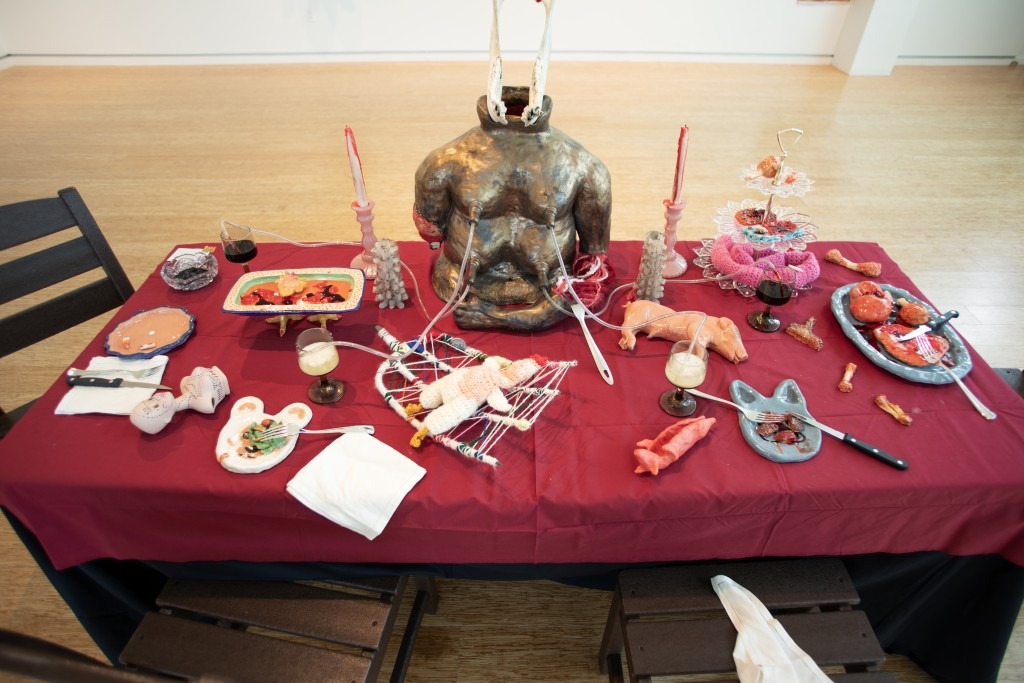
The centerpiece of the exhibition is a table set with all of the elements of a feast — but we find the feast in medias res with the utensils askew, meat partially consumed, blood-filled wine glasses half-empty and napkins placed on the chair as if their sitters may imminently return.
With echoes of Judy Chicago’s The Dinner Party (1974-1979), Law’s table titled Consumed Or Be Consumed (2024) indicates a kind of present-ness and realism that invokes the viewer as a participant. Are we allowed to sit? Who are the other guests? Is this feast for me?

“Judy Chicago has had a large influence on my work, even her part in the Feminist Art Program,” says Law. “Specifically, the collective piece Womanhouse (1972) was one that confirmed the importance for normalizing concepts like menstruation.
“The Dinner Party was one I knew I had to personally acknowledge and understand since I was making something from a similar vein. Chicago also inspired me to add every detail to the table, and make it as usable and realistic as possible. I knew I had to make the plates and have some importance to them like Chicago did.”

“While talking with classmates, they helped me to solidify the idea of making a connection to our childhood with ZooPal plates. I was able to use that as a layer of imagery and influence for the children eating at this table – the daughter has a sheep showing her to be meek and submissive, and the son has a wolf showing him to be aggressive and predatory.
“I, like Chicago, tried to acknowledge the woman’s sacrifice for the family. I displayed her body on the table for consumption. The female torso is giving away her milk and blood for drinking, and her arms for eating.”
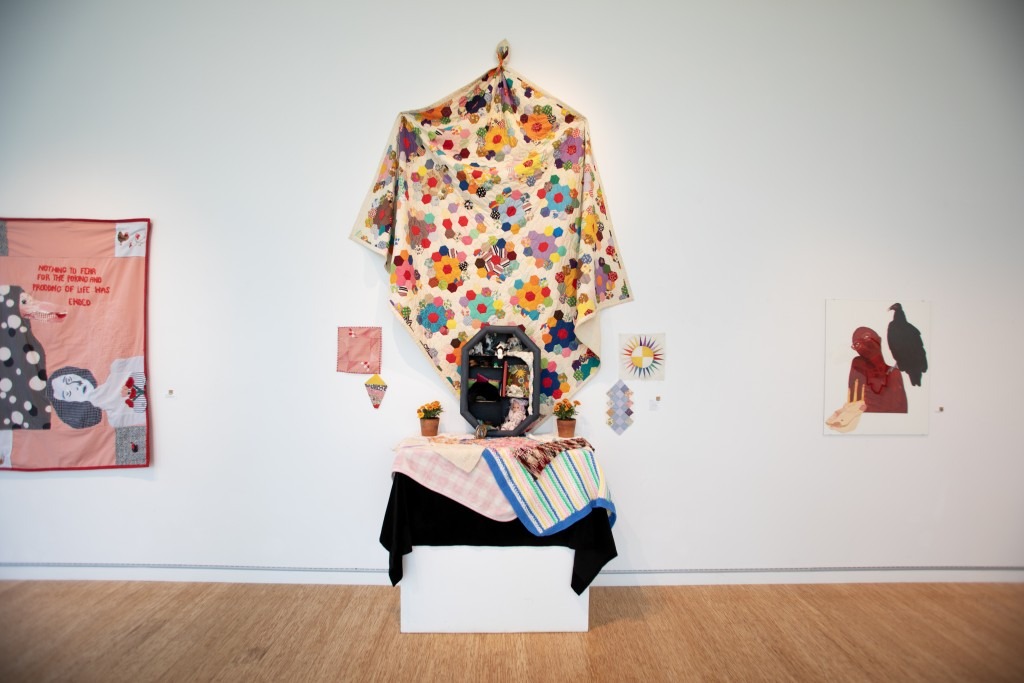
Law’s family plays a major role in Meat Your Maker with a quilt passed down from previous generations hung on the wall alongside heirlooms arranged in a curiosity cabinet, cyanotypes of family photos printed on hexagonal pieces of fabric, and materials like yarn and beads gifted by her family members.
“My work is very influenced by my family. The women in my family have taken on that role of creator in various ways – and even as I tried to move away from that role, I was constantly brought back to it.
“I was also intrigued by the materials they were using, and loved how each method allowed me to switch media and constantly make art even when I was feeling artist-block with a certain medium.”
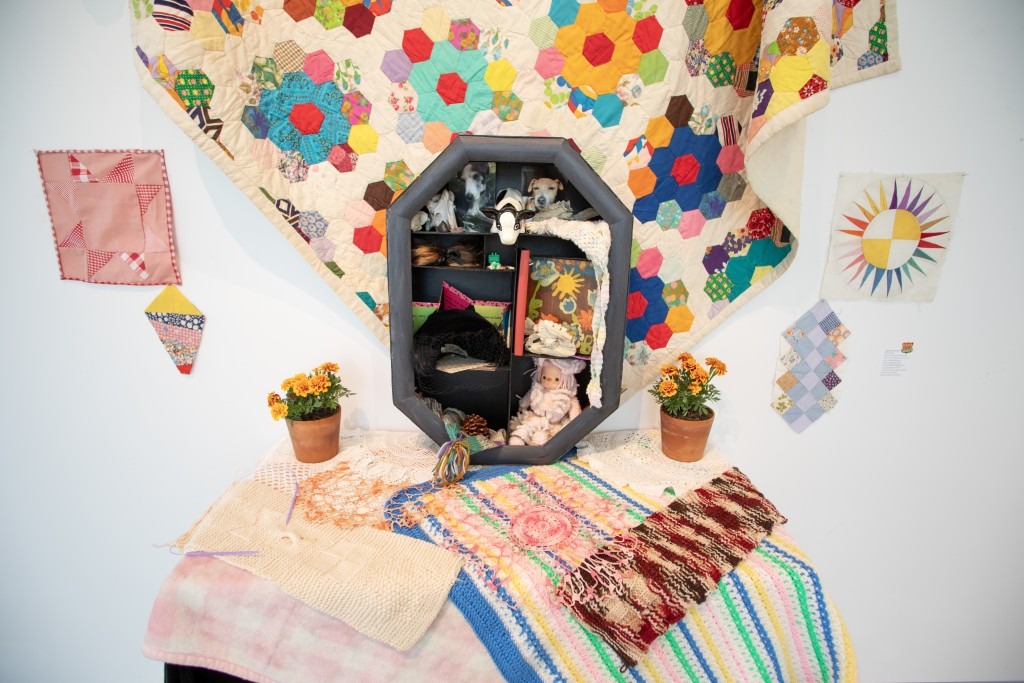
When describing her creative process, Law acknowledges a mixture of intention and improvisation. “My creative process is very mixed and unorganized to me. I typically have an idea I am very excited to start and have a lot of variations and plans worked out in my head.
“I will start creating it and then eventually jump to another project leaving things unfinished. Once I get tired of the new project, or come up with an idea to finish a past piece, I’ll go back to it. Most of these pieces were made for this exhibition. . .
“As for placement, as I got closer to the exhibition, I knew what I had. So I sectioned it in terms of ideas, and around certain objects that had a pre-determined place. I wanted you to turn the corner from the entryway of the gallery and make eye contact — or lack thereof — with the cow head titled, Ghastly Trophies Of Slaughter (2024).”

“I also knew I was gonna have hanging pieces and the table in the middle of the gallery just because of the layout of the gallery itself and what it allowed me to do. I also knew I wanted my altar titled Death Becomes Her (2024) to have the draped quilt behind it.”
Ceramic trompe-l’oeils are intermixed with readymades with such nuance that it’s possible to mistake a dead piglet, a medicine bottle, a pregnancy test or a used tampon for being just as real as the walls and floors of the gallery.
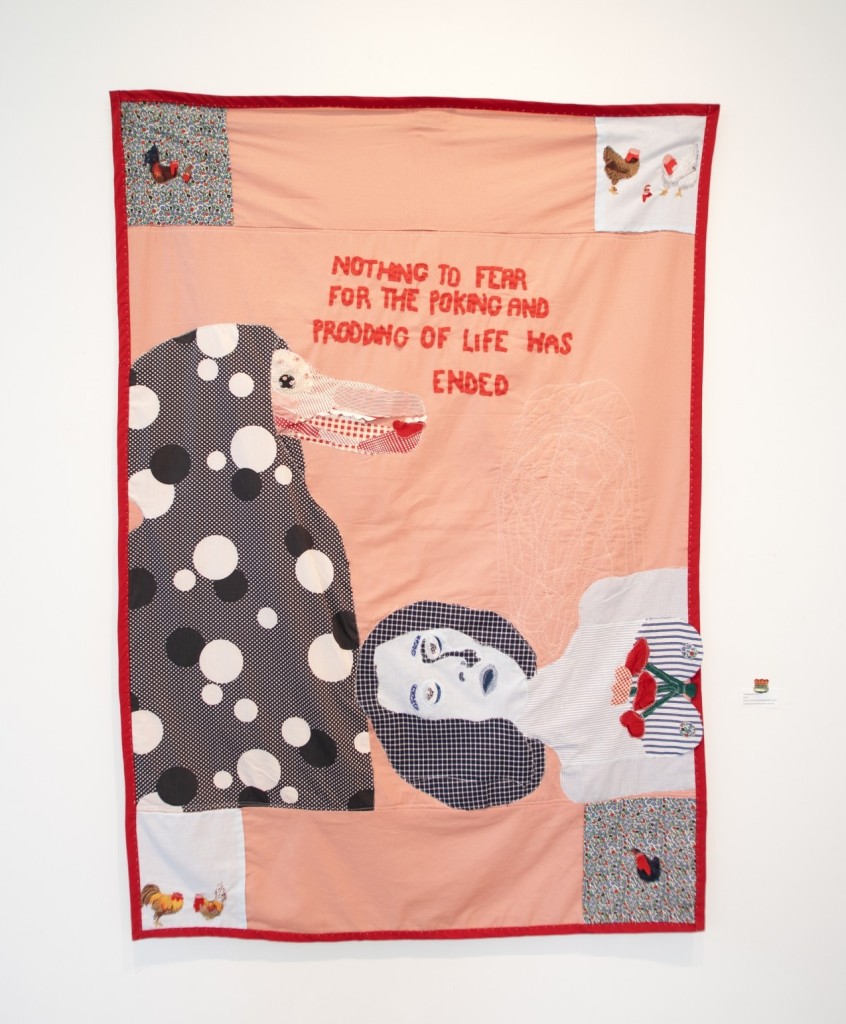
Law’s talent for juxtaposing signifiers for what’s it’s like to be a woman – presented with brutal honesty and no sugar-coating – alongside materials with self-effacing objecthood creates a stark contrast that helps to emphasize the severity of the effects of misogyny. This contrast is emphasized by the inclusion of the handmade quilt and embroidered objects that traditionally serve to signify maternal protection and safety.
“I consider quilting, crochet, knitting, embroidery and sewing to be women’s work,” says Law. “I chose these media because women in my family taught me these practices, or carried them out in a way that was seen as a casual hobby.
“I see these media as made with the intent of being used in a practical way and therefore undervalued when they were first used. There is more recognition of these media in modern art, but these media are still viewed with the connotation of being less valuable than painting or traditionally male-driven works.”
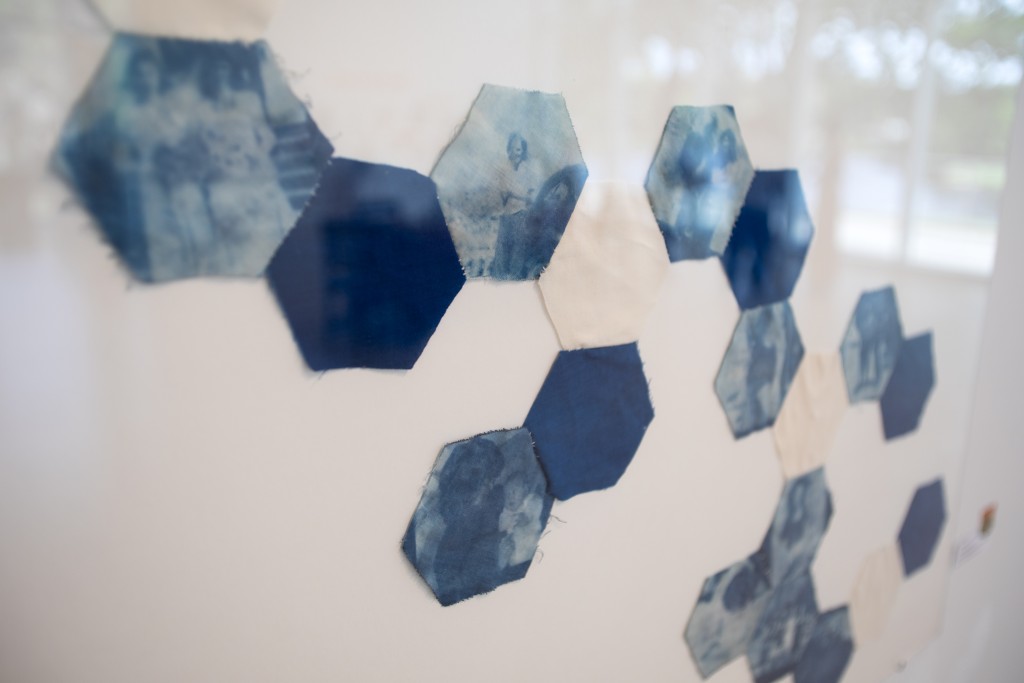
Meat Your Maker, an exhibition of carefully placed clusters of allegorical, and deeply personal, assemblages, can be considered to be in a similar vein as artworks by Marina Shaltout and Catalina Ouyang. Both artists react to a world dominated by misogyny, and neither has an aversion to the grotesque.
On her artistic inspirations, Law says, “I am very inspired by Doreen Garner because she is constantly making a statement, and has a purpose for making gory, weird pieces that create a physical reaction. I really enjoy that reaction and want, in some ways, to imitate that disgust — which I love, and call it that with the best intention!
“I am also really inspired by artists like Ghada Amer, Jo Hamilton, Mary Beth Edelson, Mithu Sen, Orly Cogan, Paul Thek, Tamara Kostianovsky and Wangechi Mutu. These artists all make connections to me – and do something with materials that I appreciate and inspires me to make art in different ways.”
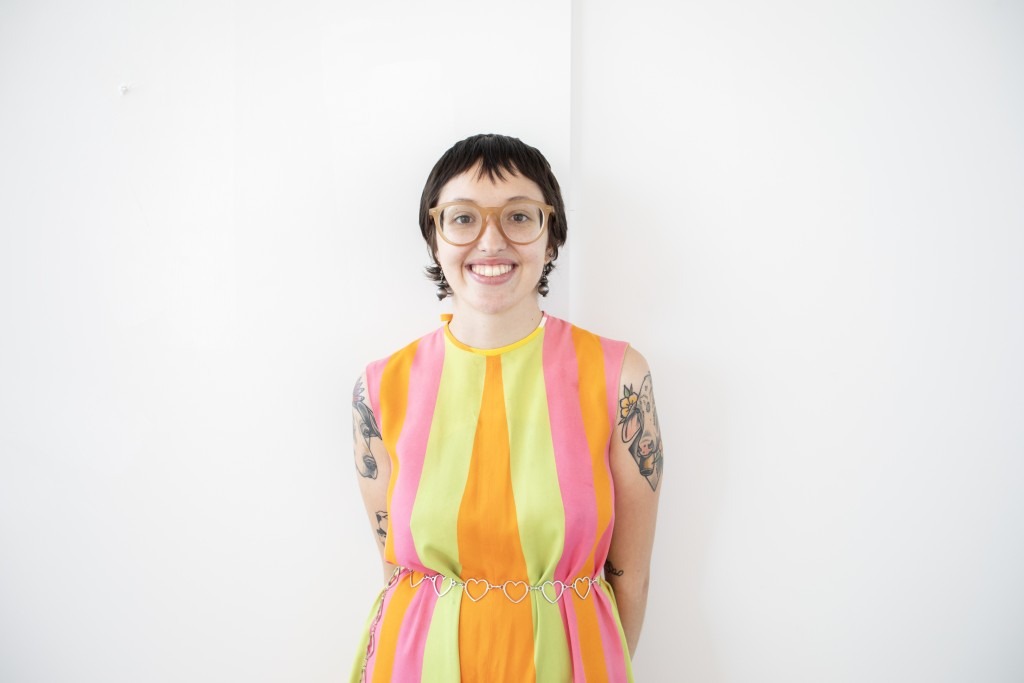
With nuance and a soft touch, Meat Your Maker invited viewers into the gallery only to find a harsh reality. Signifiers for being a woman portray the experience as filled with servitude and humiliation, and ultimately being completely consumed by those around you.
By employing media traditionally affiliated with women, Law creates an aesthetic matriarchy that serves to develop a multi-generational perspective on misogyny and its effects.
